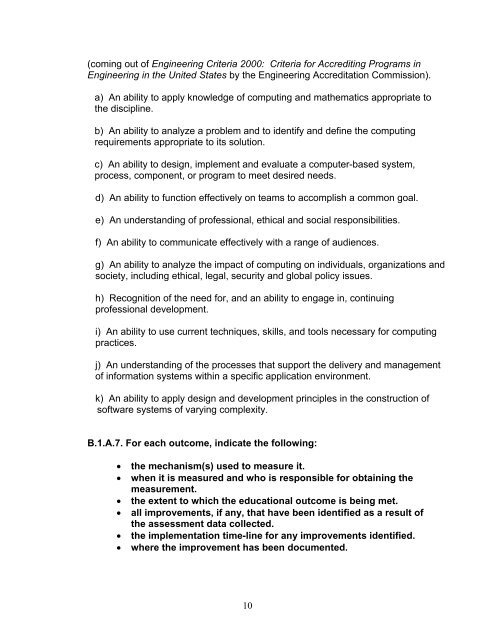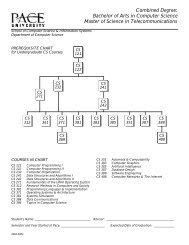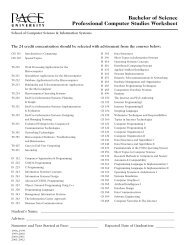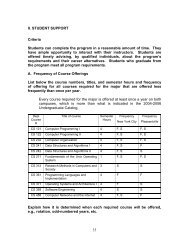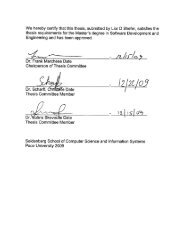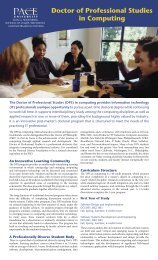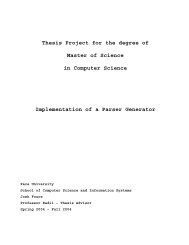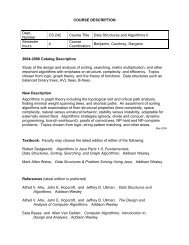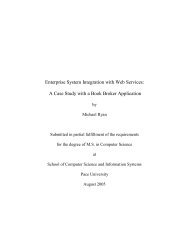I. OBJECTIVES, OUTCOMES and ASSESSMENT A ... - pace university
I. OBJECTIVES, OUTCOMES and ASSESSMENT A ... - pace university
I. OBJECTIVES, OUTCOMES and ASSESSMENT A ... - pace university
You also want an ePaper? Increase the reach of your titles
YUMPU automatically turns print PDFs into web optimized ePapers that Google loves.
(coming out of Engineering Criteria 2000: Criteria for Accrediting Programs in<br />
Engineering in the United States by the Engineering Accreditation Commission).<br />
a) An ability to apply knowledge of computing <strong>and</strong> mathematics appropriate to<br />
the discipline.<br />
b) An ability to analyze a problem <strong>and</strong> to identify <strong>and</strong> define the computing<br />
requirements appropriate to its solution.<br />
c) An ability to design, implement <strong>and</strong> evaluate a computer-based system,<br />
process, component, or program to meet desired needs.<br />
d) An ability to function effectively on teams to accomplish a common goal.<br />
e) An underst<strong>and</strong>ing of professional, ethical <strong>and</strong> social responsibilities.<br />
f) An ability to communicate effectively with a range of audiences.<br />
g) An ability to analyze the impact of computing on individuals, organizations <strong>and</strong><br />
society, including ethical, legal, security <strong>and</strong> global policy issues.<br />
h) Recognition of the need for, <strong>and</strong> an ability to engage in, continuing<br />
professional development.<br />
i) An ability to use current techniques, skills, <strong>and</strong> tools necessary for computing<br />
practices.<br />
j) An underst<strong>and</strong>ing of the processes that support the delivery <strong>and</strong> management<br />
of information systems within a specific application environment.<br />
k) An ability to apply design <strong>and</strong> development principles in the construction of<br />
software systems of varying complexity.<br />
B.1.A.7. For each outcome, indicate the following:<br />
• the mechanism(s) used to measure it.<br />
• when it is measured <strong>and</strong> who is responsible for obtaining the<br />
measurement.<br />
• the extent to which the educational outcome is being met.<br />
• all improvements, if any, that have been identified as a result of<br />
the assessment data collected.<br />
• the implementation time-line for any improvements identified.<br />
• where the improvement has been documented.<br />
10


